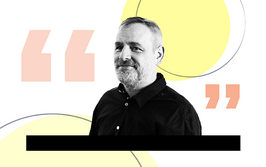The Challenges of Perfusion Perfection
How a collaboration between different organizations aims to advance perfusion for cell and gene therapies.

Daria Marsh
The Cell and Gene Therapy Catapult Catapult, alongside Pharmaron Biologics and Complement Therapeutic, has entered a strategic collaboration with £1.4 million funding from Innovate UK Transforming Medicines Manufacturing Programme to develop innovative processes that could improve both perfusion technology and the efficacy of therapies for diseases with high unmet clinical need. To tell us more, Daria Marsh, Head of Bioprocessing, at the Cell and Gene Therapy Catapult, shared her thoughts.
What challenges have stood in the way of perfusion perfection thus far?
The establishment of a representative scale down model to enable development and optimization of the upstream process has been a significant challenge. As challenging as this is, we will be leveraging industry knowledge developed in the biopharmaceutical industry as well as state-of-the-art bioprocessing approaches to develop representative scale down models.
Achieving effective AAV production by transient transfection of high cell density culture is another challenge which we plan to tackle by developing semi-continuous harvest methodologies and combining these with online PAT to enable control of critical process parameters.
Furthermore, high cell density can increase the impurity challenge at down-stream processing through increased load of DNA, HCP, and other impurities.
How complex is it to manufacture AAV-based media, as well as maintain the required quality?
Perfusion processes have a higher media requirement, so ensuring efficient media supply at manufacturing scale can be a challenge. Depending on the manufacturing facility design and capabilities, on-site media hydration may be required for scales above 200 L, which has additional implications for manufacturing capability, supply chain, logistics and QC, but strategies for this have been well established in other modalities such as monoclonal antibodies, so there are lessons that can be learned.
How do you expect this partnership to improve manufacturing efficiency and capacity in general?
We hope to achieve a significant increase in volumetric output of AAV from this approach, which can enable production of material for high dose or systemic disease indications. It will contribute towards a significant reduction in the manufacturing footprint required, making production more cost effective and sustainable.
What are your hopes for the outcome of this collaborative project?
This project is an exciting opportunity to develop the next generation AAV platform which could potentially help to unlock a cost-effective manufacturing option for higher dose or systemic applications. I hope we achieve a more effective path to cell and gene therapy commercialization that outputs more sustainable and cost-effective manufacturing facilities producing these products for their patients.
Following a Bachelor’s degree in English Literature and a Master’s in Creative Writing, I entered the world of publishing as a proofreader, working my way up to editor. The career so far has taken me to some amazing places, and I’m excited to see where I can go with Texere and The Medicine Maker.



















